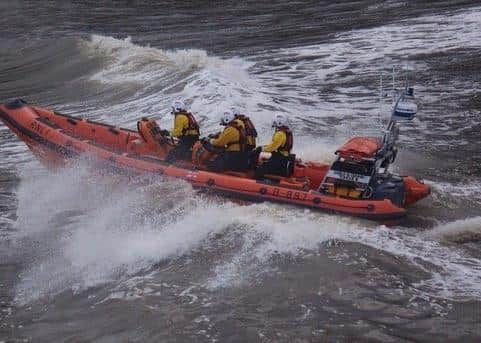How ‘spaws’ have changed the face of once traditional village Staithes


Imagine beautiful colours, seagulls crying, a sheltered harbour, haphazardly stacked
lobster pots, and the distant chug-chug of a vessel’s engine– see that and you have Staithes.
Advertisement
Hide AdAdvertisement
Hide AdThis is the home of the coble fishing boat, the Staithes bonnet for ladies, and serious art. It was also once home to Captain Cook in the 18th century, who circumnavigated New Zealand and reached an untimely end when stabbed by Hawaiian natives.


A Staithes local, Bill Hinchley, had offered to guide me – and no better choice could I have made. Generations of his family had lived in the village for more than 500 years and Bill was an encyclopaedia.
Facts came pouring from him without any form of prompting.
“The village shows how society has changed,” he said, as we took our first steps on the High Street.
“The bank is now a house, the bakery an art gallery, and a church the museum.”
Advertisement
Hide AdAdvertisement
Hide AdWe walked on, me out of breath as I tried to keep up. Bill was six years my senior.
Staithes has certainly transformed thanks to so-called progress. Once there were eight pubs, now there are three, and the fishing fleet of 80 vessels has shrunk to a handful.
Shops are disappearing, while 80% of buildings are now second homes. Upmarket cars patrol the cobbled streets, and the few remaining locals – yackers they call them – talk about times past.
They tell how the newcomers, or spaws, have changed the face of this once traditional village.
Advertisement
Hide AdAdvertisement
Hide AdThe yackers largely relocated to the top of the town thanks to a 1960s supply of council housing and were happy to do so, as near the harbour the houses are damp, the streets dark, and sometimes narrow.
Try Dog Loup, which at 45 centimetres wide is the slimmest street in England’s north. Time was children would use it as an escape route from the portly village policeman.
Evading authority was a major feature of Staithes’ life in the earlier eras of smuggling. Tea was a favoured item, but there was rum and brandy, too. Staithes was a favoured smuggler’s landing spot, the contraband being moved onward under the nose of the Preventive Forces. There were secret signs and tunnels, hiding places under flagstones, and a myriad of tricks and ruses.
Staithes has existed since prehistory, with discoveries of flint tools, ritual monuments, and crop enclosures that go back thousands of years.
Advertisement
Hide AdAdvertisement
Hide AdThe area is also fossil heaven. As the sandstone cliffs crumble, signs of life 200 million years ago emerge, including sea-going dinosaurs. This is the Dinosaur Coast.
There is mystery, too. The Anglo-Saxon Princess buried nearby, the 17 th century tidal wave that demolished 20 houses, the headless body found on a neighbouring beach, stark naked apart from sock and boot.
Folklore also has it that two mermaids were once caught by accident. They immediately cursed the village and the place has never recovered.
As for ghosts, Staithes has plenty of them.
“Sometimes you smell ancient pipe smoke,” said Bill, as we stood before the scratched wooden door of the former Fisherman’s Institute. It appears without warning.”
Advertisement
Hide AdAdvertisement
Hide AdAs he spoke, something cold crept across my shoulders. It crept again when he told of the ghost-like baby in the house beside the village’s Coffin Route, and the young girl who walks the clifftop, save she treads now where the path once was, 100 years ago.
Nothing escapes a local’s attention in Staithes. A visitor is instantly spotted, however inconspicuous they may feel.
A cobble loosens, a window cracks, and within moments Staithes is talking.
The commonest topic is the lifeboat, a focus of pride for the village. Out the boat goes, often into a turbulent sea, and until it returns the sole conversation is if the crew’s efforts have ended happily.
Advertisement
Hide AdAdvertisement
Hide AdDuring an emergency, try any of Staithes’ teashops or pubs. There is only one question. Has the rescue been successful?
“Did you hear the helicopter last night?” asked a woman in the village’s Cod and Lobster pub as I stirred my morning coffee at a window table.
“What helicopter?” I queried. “Missing fisherman,” she said. “The boat went out, and a helicopter. They were searching until morning.”
I had slept through everything, even the helicopter hovering overhead. “Any luck?” I probed.
Advertisement
Hide AdAdvertisement
Hide Ad“Still missing,” she replied. “Another statistic in the making.”
Then she shrugged, turned to a colleague beside her and soon they were talking of lifeboats and landslides.
What did I know? After all, I was just a visitor and the village hid many mysteries.
Yet it was a remarkable place, filled by remarkable things, and I had met Staithes’ Bill Hinchley.